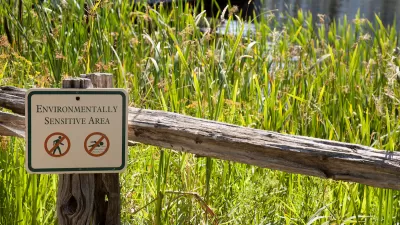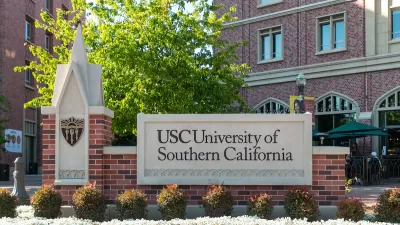The current community input process often amplifies the voices of already powerful groups who act to stop valuable projects for their own benefit.

The planning process puts a strong emphasis on public input, with many types of projects subject to mandatory public meetings. Jerusalem Demsas argues that this process—which he calls “whoever yells the loudest and longest wins”—is, in fact, harmful.
To put a fine point on it: Deference to community input is a big part of why the U.S. is suffering from a nearly 3.8-million-home shortage and has failed to build sufficient mass transit, and why renewable energy is lacking in even the most progressive states.
Demsas acknowledges that “Democracy is at its best when the views and needs of the people are accurately transmitted to their representatives, the representatives act, and voters express their approval or disapproval in the next election.” But the current process “is fundamentally flawed: It’s biased toward the status quo and privileges a small group of residents who for reasons that range from the sympathetic to the selfish don’t want to allow projects that are broadly useful.”
Demsas outlines how small groups of opponents can derail transit projects, slow the production of housing, block renewable energy projects, and otherwise stymie projects with broad social benefits. “Not only do community groups block explicitly green developments; they have weaponized environmental regulations in their quest to do so.” Laws such as the California Environmental Quality Act (CEQA) and its federal counterpart, NEPA, are frequent players in lawsuits to stop housing and transportation projects. “Although well intentioned, these rules have provided a means for disgruntled locals to pile on delays to projects they don’t like, whether or not they have a legitimate environmental complaint. As the economist Eli Dourado has noted, environmental-impact statements used to be pretty short—some just 10 pages.” Now, they average 1,600 pages in length.
For Demsas, the public process doesn’t “change the distribution of power” to empower underserved communities. “Expanding opportunities for political participation failed to solve the problem of inequitable project distribution, because the fundamental problem wasn’t lack of community input; it was a lack of political power among disadvantaged groups.”
FULL STORY: Community Input Is Bad, Actually

Alabama: Trump Terminates Settlements for Black Communities Harmed By Raw Sewage
Trump deemed the landmark civil rights agreement “illegal DEI and environmental justice policy.”

Planetizen Federal Action Tracker
A weekly monitor of how Trump’s orders and actions are impacting planners and planning in America.

The 120 Year Old Tiny Home Villages That Sheltered San Francisco’s Earthquake Refugees
More than a century ago, San Francisco mobilized to house thousands of residents displaced by the 1906 earthquake. Could their strategy offer a model for the present?

Ken Jennings Launches Transit Web Series
The Jeopardy champ wants you to ride public transit.

BLM To Rescind Public Lands Rule
The change will downgrade conservation, once again putting federal land at risk for mining and other extractive uses.

Indy Neighborhood Group Builds Temporary Multi-Use Path
Community members, aided in part by funding from the city, repurposed a vehicle lane to create a protected bike and pedestrian path for the summer season.
Urban Design for Planners 1: Software Tools
This six-course series explores essential urban design concepts using open source software and equips planners with the tools they need to participate fully in the urban design process.
Planning for Universal Design
Learn the tools for implementing Universal Design in planning regulations.
Clanton & Associates, Inc.
Jessamine County Fiscal Court
Institute for Housing and Urban Development Studies (IHS)
City of Grandview
Harvard GSD Executive Education
Toledo-Lucas County Plan Commissions
Salt Lake City
NYU Wagner Graduate School of Public Service





























